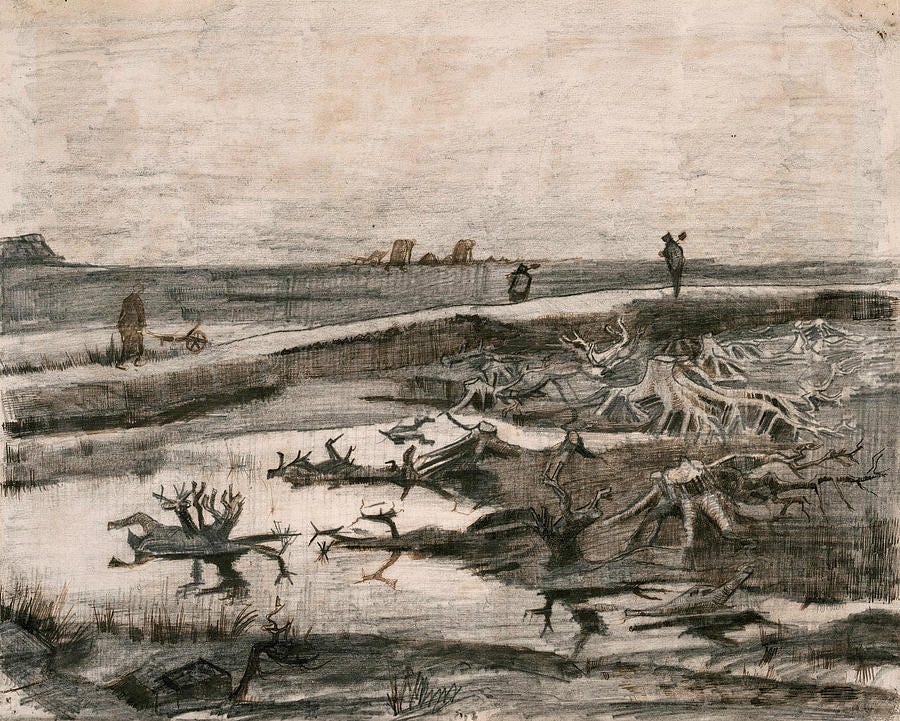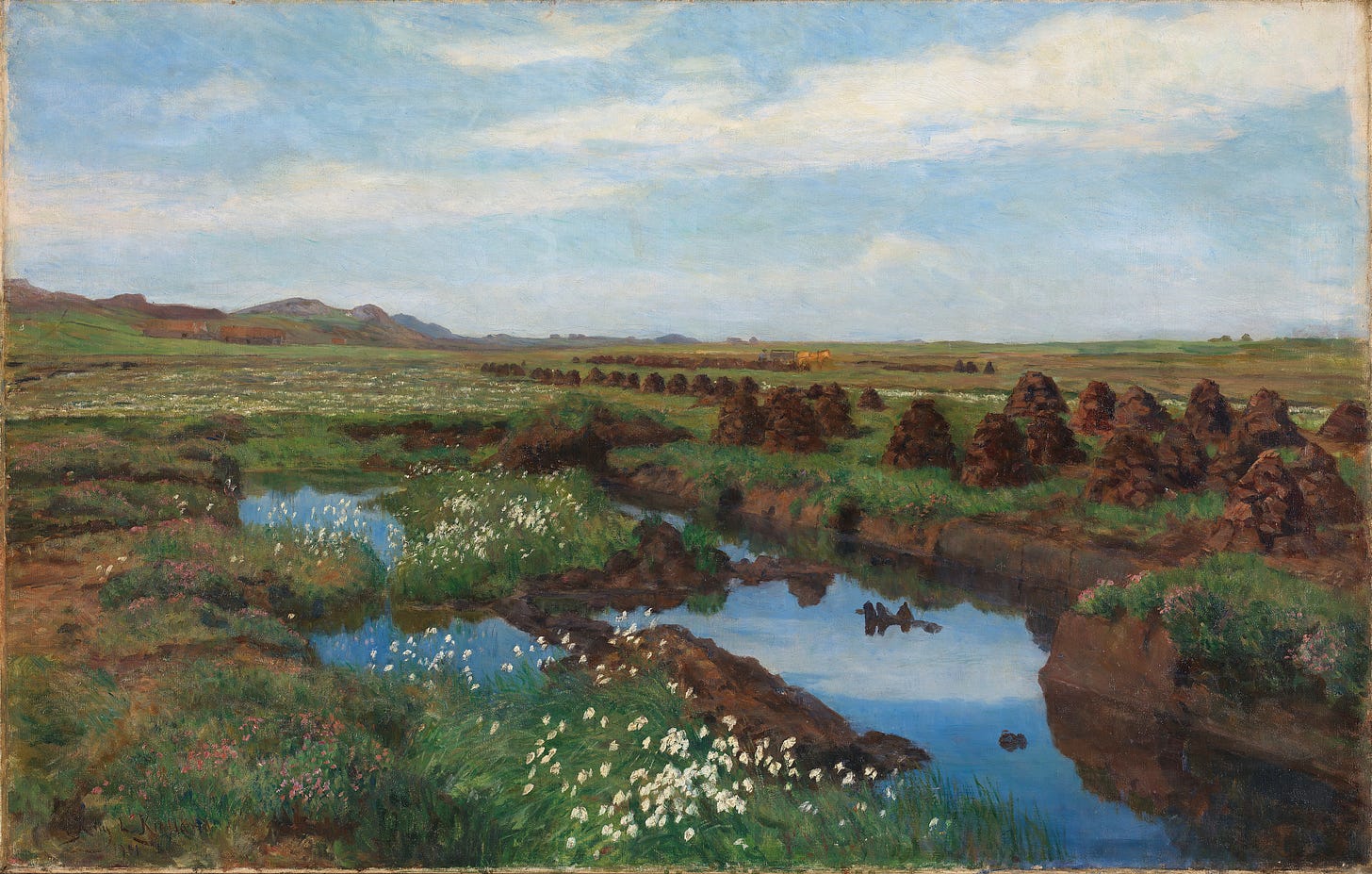I realize I haven't updated my newsletter in a few months, as is the way of the PhD student. I don't think there's really much to say about that topic that isn't immediately obvious: my own graduate studies and teaching practice keep me consistently busy. However, as my semester gradually winds down, I begin to plan for summer.
I will not be teaching for my university as my grad contract ends each May (a nice way of saying I’ll be unemployed), so I have been planning to pitch out one or two classes/workshops. One of the stories I assigned for my college-level short story class has been masticating in this silly little head of mine, and while writing some notes on one story I ended up creating a prompt to generate writing out of.
I'm thinking of calling one of my classes "A Subtle Magic," which deals with torquing narratives to apply elements of the uncanny, strange, or fantastic. This would be a class both for genre fiction writers as well as those who engage in literary fiction, because at the core this is about how we can use excess and unfamiliarity to expand our ideas of mimesis—ultimately harnessing the fantastic to strengthen other aspects of our writing, such as theme (which is the case for the story I’m about to discuss).
Anyway, I haven't pitched this class out yet, but I thought maybe sharing one of the prompts that came out of my notes could help serve as an inducement for what I am imagining. Perhaps, if this class does get accepted somewhere, I can also link back to this post to tease one of the activities we will do.
NOTE: "The Bog Girl" by Karen Russell can be found online over at The New Yorker or in Russell’s 2019 story collection, Orange World. The following analysis and creative writing prompt is based on a close reading of this story, and thus, also features a few light spoilers.
In Karen Russell's "The Bog Girl," the titular character is a corpse recovered from a bog in Ireland. She is simultaneously thousands of years old while technically embodying adolescence, an ambiguity that Russell often plays up for humor and thematic resonances. "Ambiguity" is the key that helps unlock this story. Bog bodies are cadavers whose skin looks almost like it is covered in a sheen of graphite—not unlike the Tin Man of Oz. Russell places the Bog Girl in a narrative space where she's not entirely in the uncanny valley (i.e.: being recognized as corpse—which would scare the other characters in the story), but not entirely a healthy person either who can pass as entirely "normal" (although she comes close in the way that the other humans feel judged by the Bog Girl or perceive her as a fellow living human).
Russell often uses ambiguous language to almost trick the reader into feeling like the Bog Girl is just a laconic, indifferent living figure rather than a preserved corpse that would be more at home in a natural history museum. She does this by absurdly planting the Bog Girl on an Average Joe's couch while the surrounding characters live their lives. Russell maintains this tightrope walk for much of the narrative, even using uncertainty for the relationship between fifteen-years-old Cillian (our protagonist) and the Bog Girl (what exactly is the extent of their relationship, the reader wonders). The only time this romantic ambiguity breaks is for ethical reasons (Russell wants to communicate to the reader that Cillian does not have sexual relations with a bog cadaver who cannot consent, being an ancient corpse and all).
In a way, the basic plot could happen, legal ordinances notwithstanding. A teenager could find a preserved corpse in a bog and bring it home to the family. He could also bring the body to school (if you don’t overthink the logic of transporting an inanimate cadaver everywhere—something Russell purposefully leaves out to help massage the illogic inside the story). The way the characters judge or feel judged by the speechless Bog Girl allow us, the readers, to suspend our disbelief. These plot points probably would not happen, but they are also not completely out of the realms of what we can understand as our basic, shared sense of reality.
The characters in the story use the speechless Bog Girl as a type of mirror for their desires, a therapist for their anxieties, a very soft type of scapegoat (much more passive compared to the type of scapegoating that happens in a story like Shirley Jackson's "The Lottery"). The popular girls at school project their too-cool fantasies onto Bog Girl and style her hair with rhinestone barrettes. Cillian's mom (Gillian) projects all her upcoming-empty-nest anxieties of losing her son to another woman as he grows up all-too-quickly. Cillian is allowed a safe type of puppy love for a girl who can never reject him. This all reaches a point of fracture (another key word) when the Bog Girl unceremoniously comes alive one night.
Although the Bog Girl was already stretching how much we are willing to believe as readers by possibly looking more fleshy and life-like (as opposed to silver-skinned human remains), we are absolutely not going to accept a reality where a 2000-year-old corpse can wake up. This is an important jolt as far as story structure is concerned. Russell moves us away from the possibly possible and the improbable to the fully impossible. This is also the moment where the Bog Girl is no longer a sounding board or scapegoat for other people: she is alive with her own wailing voice—a human who has efficacy over her own desires. Through this, Cillian faces a pivotal change, being confronted with someone who has autonomy and is no longer just an object of his adolescent infatuations.
Now onto the prompt.
This is a creative writing prompt about story structure and plotting. Truly a fiction prompt, but it would be interesting to see how someone could incorporate this into narrative poetry, play-writing, nonfiction, etc. For most of your story, you are being asked to incorporate some element that is strange or uncanny—but is not entirely impossible. Scientifically sound plot elements are always a safe bet for immediately believability (in the way that bog acids actually do preserve human corpses for thousands of years). We’re talking about a conceivable fantastic: more along the lines of ‘a human starts growing massive amounts of hair all over their body at an increasingly rapid rate’ vs. ‘a human finds a mermaid in their bathtub one morning.’
The strange plot element should defy logic in softer ways—ask the reader to suspend their disbelief—but the element does not initially lean into a type of fantastic that would be inconceivable. Then, at a key point, you are asked to fracture that ambiguity by moving into a moment of complete clarity. You are communicating to the reader something that was possibly strange is now clearly impossible, explicitly fantastic. The story breaks. In my previous example, perhaps our hairy human’s ever-growing follicles wrap around the entire planet. Earth becomes a hairworld. The clarity must confirm to the reader: yes, this could never happen, but the story is confidently moving on with this illogic we have established, and you are along for the ride. We fracture because the break instills a sense of gravity in the reader. This is the moment where both the narrative and the reader are changed by the magic which they have no choice but to witness.
There are many other narrative considerations outside of what is ultimately a structural prompt: setting (Russell uses a fictional archipelago in Ireland called the "Four Horsemen"), tone (Russell prefers something that is light and at times bitingly funny), and other choices like character and theme. Ultimately, Russell's Bog Girl becomes alive to tie into bigger questions about love and agency. It is all these small elements working together though that make Russell’s story uniquely hers.
It should be noted although not a direct part of the prompt, it is worth asking yourself what your own fracture does for the rest of the narrative—how it creates a thematic opening that can resonate within the reader. With Russell’s story, I’m asked to consider why Cillian perceives the Bog Girl as unfamiliar after she comes alive—abandoning her previous corpsedom. What changes when she speaks his name aloud? Why does he no longer recognize this girl he doted on? Why does her own voice and reanimation instill fear and bewilderment in him?
It’s these types of inquiries and resonances that keep the story continuously rotating in the reader’s mind. If there is one thing to be desired via such a structural break, it is this.
Like the Bog Girl, who must ultimately return to her peaty wetland, I too must return to my bog of grading and lesson planning (I say this lovingly—honest!). Hopefully some more exciting newsletter updates await y'all in the summer, and maybe even a class offering or two, which I would be delighted to share. Until next time.



